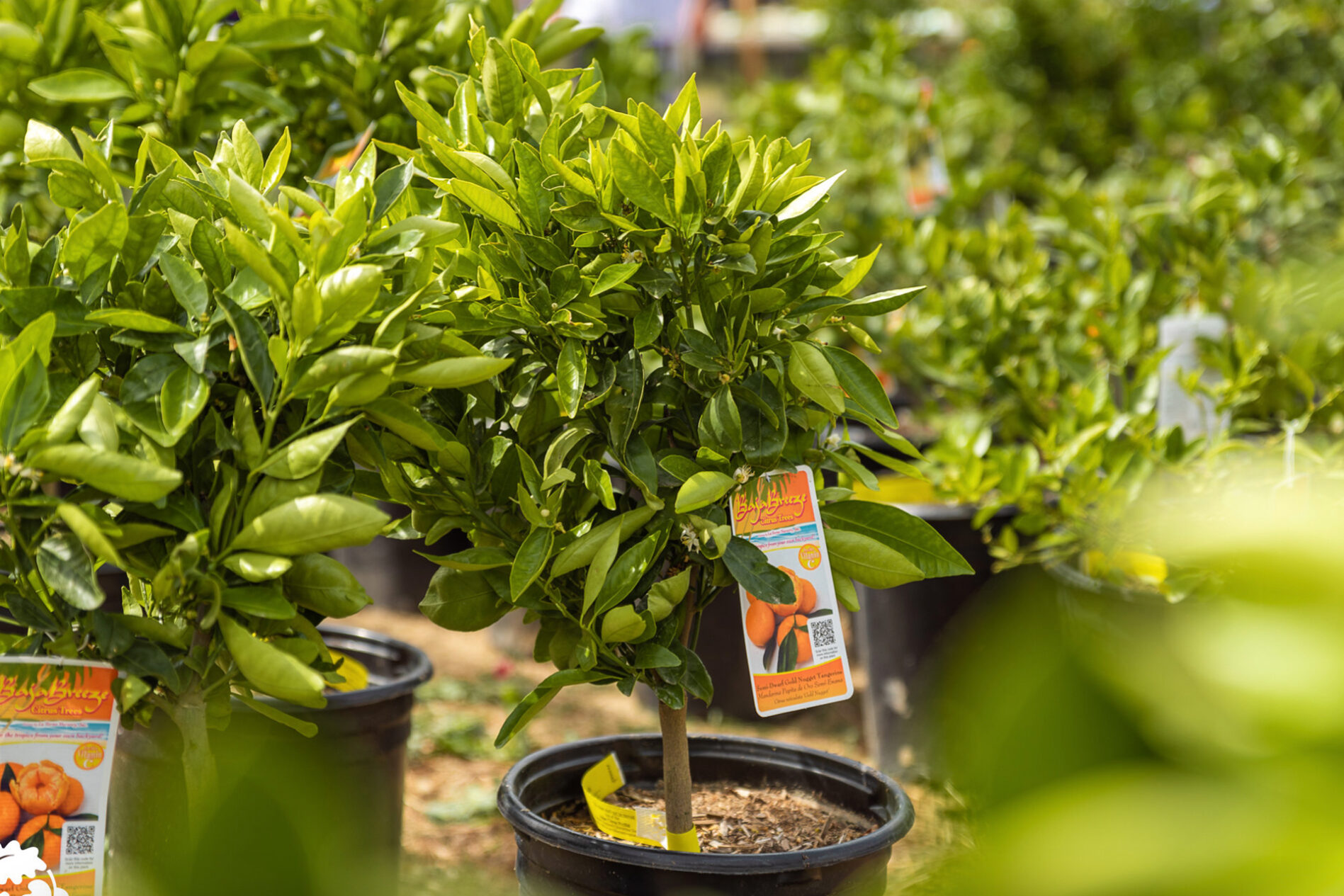By Christyne Imhoff

TreePeople has been distributing fruit trees since 1984, focusing on areas of LA County known as food deserts. These areas have limited access to grocery stores selling fresh fruits and vegetables and include South LA, Southeast LA and the Northeast San Fernando Valley. Home-grown fruit makes a positive difference in the lives and health of people, so distributing fruit trees to communities throughout Los Angeles has always been an important part of TreePeople’s work.
When choosing fruit trees for your own home, there are certain terms that are specific to fruit trees and are used on the tree identification tag. It is helpful to read and understand the terms before purchasing your tree. For example, some trees require another tree to help it pollinate, or require a certain amount of chill hours, in order to produce fruit.
Here are some common words you may see on a fruit tree tag:
Cultivar
Most fruit trees have a special name in addition to the type of fruit they produce. For example, Gala apple. That special name (‘Gala’) is called a cultivar, which stands for cultivated variety.
Chill Hours
During winter, deciduous fruit trees need a certain amount of hours below 45 degrees F to cause the tree to begin growth again — called chill hours. If the tree doesn’t receive the amount of chill hours it requires, it can result in low fruit production.
In Southern California, trees are selected with “Low Chill” requirements. That generally means 300 hours or less in the Los Angeles basin and areas near the coast; and 400 to 500 hours for inland (Valley) areas.
Cross Pollination
Some trees require the pollen from another tree to pollinate their flowers — called cross pollination — or they won’t produce fruit.
Other trees are self-fertile, and can produce fruit on their own. If you only have room for a few trees, choose self-fertile trees to maximize your options.
Harvest Time
Harvest time describes when the fruit on a tree will be ripe. Ripening times are usually called early season, mid season, or late season. When choosing different fruit trees, consider choosing trees with different harvest times to ensure fruit throughout the year.
Dwarf
Dwarf fruit trees mature around 8 to 10 feet tall and wide. They produce an abundance of full-sized fruit, but don’t grow to the height and width of a standard fruit tree. require a large amount of room to grow. Dwarf or semi-dwarf fruit trees are a great option for when you have limited space.
Hopefully, this takes some of the guesswork out of reading a fruit tree tag, and ensuring the right tree for your yard, and years of abundant fruit!

